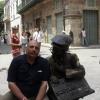Pharmacist, discusses Atrial Fibrillation, stroke prevention and how a pharmacist can help AFib patients choose the right blood thinner.
What is Local Pharmacist
If you’re recovering from a heart attack or cardiovascular surgery such as an ablation, you may work closely with a local pharmacist to manage your heart medications. Patients with cardiovascular disease such as palpitations and SVT or who have had a heart surgery will work with a local cardiologist and/or a local cardiothoracic surgeon as well as their local family physician. A local pharmacist is a healthcare professional who prescribes medication to patients, from birth control pills and arthritis medications to antidepressants.
A local pharmacist is also there to educate you on the benefits and side effects of the medication you’re taking, including potential drug interactions. Some of the most common heart medications include anticoagulants, ACE Inhibitors, beta blockers, diuretics and vasodilators. A local pharmacist can also help you understand more about heart-healthy nutrition including sodium reduction and exercise. If you’d like to learn more about how a local pharmacist can be a great addition to your healthcare team, begin by talking to your local family physician, local cardiologist or local cardiothoracic surgeon.
Blood pressure monitoring at home is very important, and it also allows the patient to be actively involved in their therapy for blood pressure.There are a number of different blood pressure monitors available, different brands, different styles. They vary from the kind that you have a stethoscope in your ears, and you try to hear the blood pressure flowing through. There is a semi-automatic kind where you actually pump up the cuff, and the machine does the reading. And there’s a fully automatic variety that allows you to basically press a button. The machine pumps up, deflates and does the reading.
Basically, the units are all similar. They have a blood pressure cuff that goes around the arm, goes above the elbow. There’s on/off buttons to turn the machine on and do the reading.There are other machines that are also – the wrist variety that go around the wrist, perhaps not as accurate. When you do use the blood pressure machine, it is very important that it’s placed appropriately on the arm, next to the skin, not over a shirt or a sweater. And that will help allow for a more accurate reading.
Blood pressure changes and fluxes throughout the day, so when you do your blood pressure checking at home, you want to sort of keep things equal as best you can. So if you’re checking your blood pressure once a day, try to check it around the same time, with the same variables in play. For example, you might want to check blood pressure first thing in the morning when you wake up. That tends to be at the lowest. There’s less stress factors, as well, so it might be the lowest reading.
When you do your blood pressure readings, what you really want to do ideally is to check it three times in a row. But we want you to wait two to three minutes between each reading. That allows the arteries to rebound, and it just allows for a more accurate reading. So if you do three readings, two to three minutes between, that would be ideal, and then average those readings. When you see the doctor in the doctor’s office, and the doctor does the blood pressure, that’s just really representive of only one time of the day, that blood pressure, whereas if you’re doing monitoring at home, you’re getting a large number of readings throughout the day.
Many of these blood pressure units will have memories on them, and they will stamp the memory with the date and the time. And you can show your physician that. If not, you can also just do a nice log of the readings.
Making any change in your medication for blood pressure should be done with you and your doctor. And all your blood pressure readings that you get at home should be taken into your physician. It gives the physician a great idea and understanding of what your blood pressure is through the day, through the weeks, through the months. And the doctor can do the assessment.

















